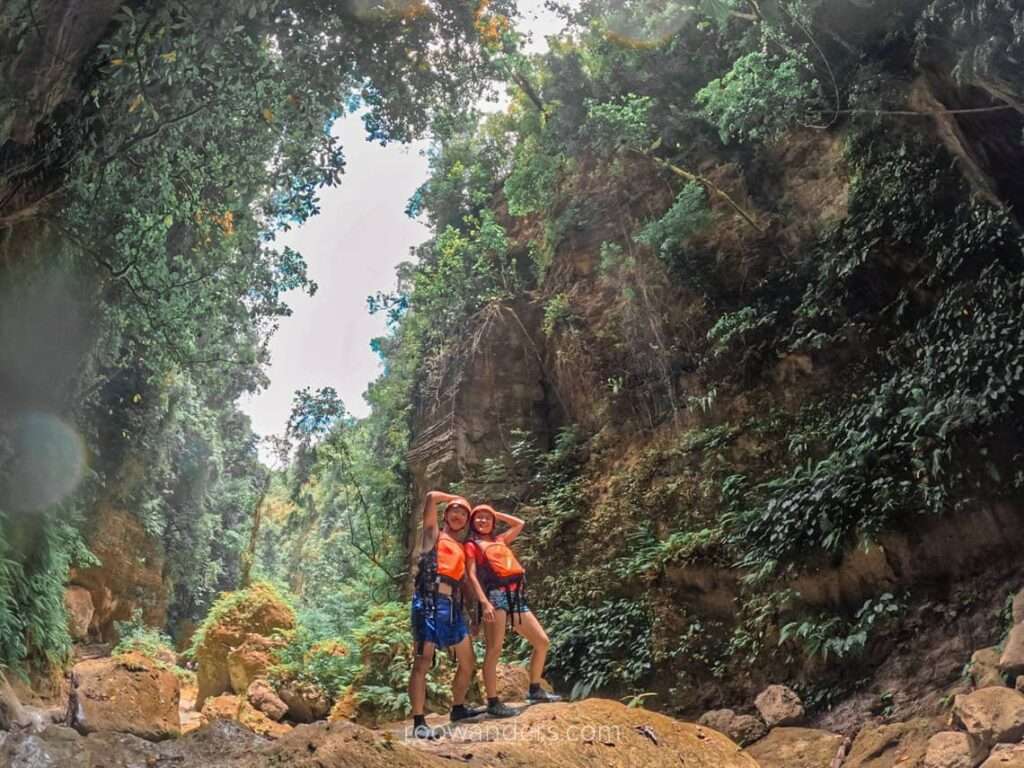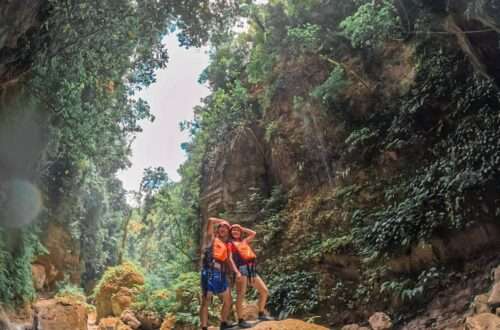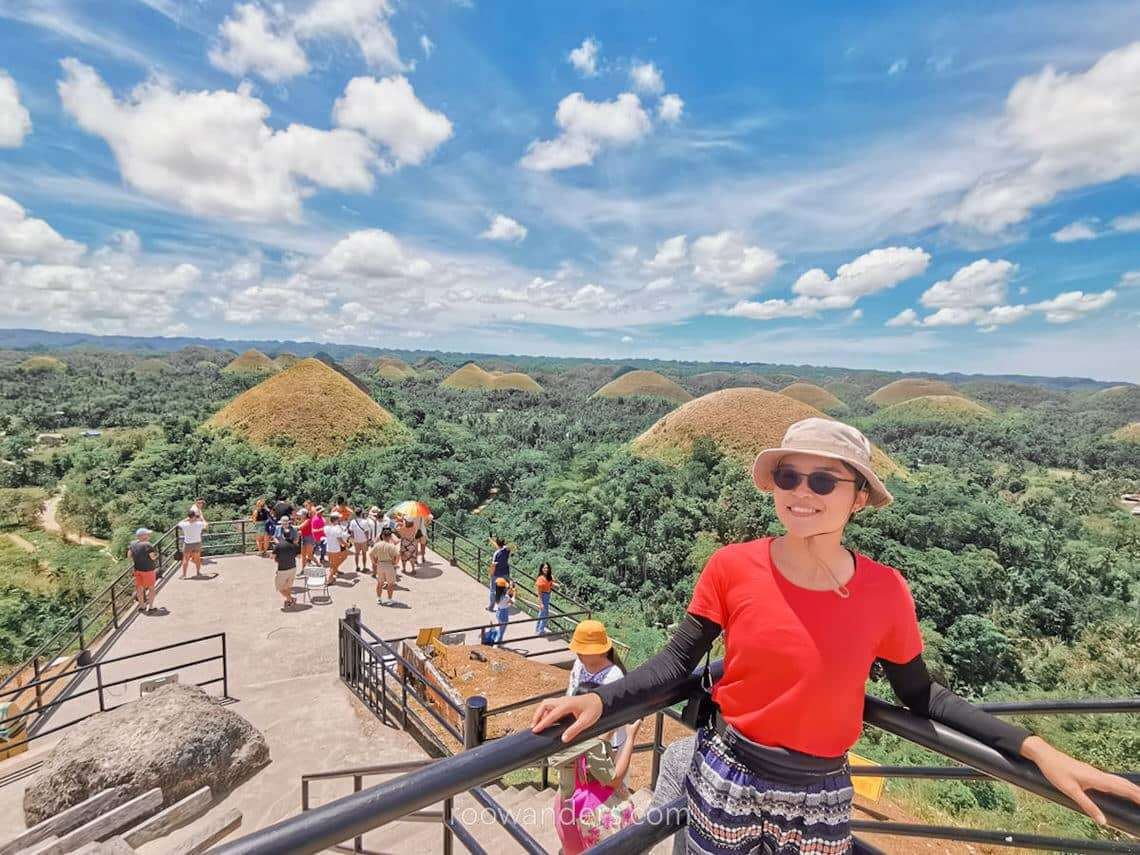
Travelling in Cebu Guide for Beginners
Cebu, a popular beach destination in the Philippines, is home to a heck load of activities.
What comes to your mind when you think of the Philippines? Beaches, the sun, and water sports? Well, that’s normal, considering the Philippines consists of over 7000 islands.
But when I first visited the Philippines in 2019, it was not the oceans I went for, but rather the mountains. For my short trip to the Ifugao, I saw the hanging coffins of Sagada, did some caving at Lumiang Sumaguing, and tried to look for Thanos in the rice fields of Banaue and Batad.
Fast forward to a post-pandemic world. Cebu Pacific tempted me with a very reasonably priced return ticket to Cebu in 2023. Who could resist! And so, a week-long trip was conceived, and here’s a post to address any curiosity or concerns you have about The Queen City of the South!
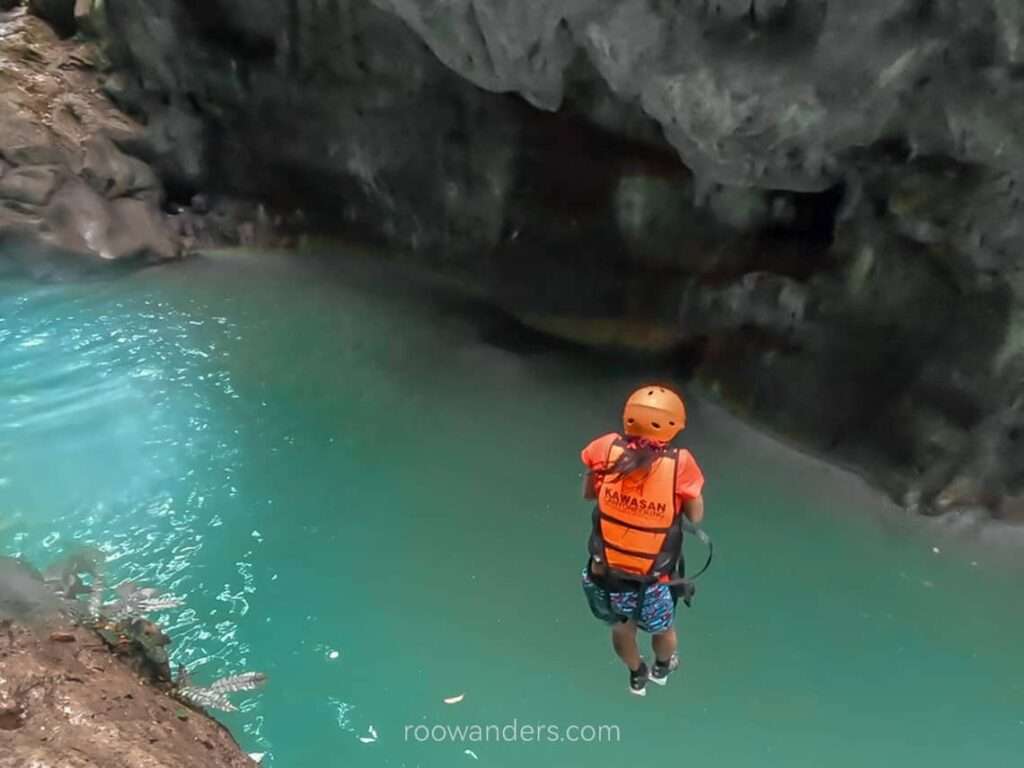
I visited Cebu in April 2024. Find all posts about my travels in the Philippines here! This post contains affiliate links that cost nothing to you but support my blog! It may also be updated periodically. Cheers!
Immigration Matters
Visa
Most travellers into the Philippines enjoy visa-free entries of up to 30 days. As always, ensure your passport is valid for at least 6 months before your travels!
Digital Arrival Card
For all my travels, there is always some arrival card to fill out before we go through the immigration queue. The last major backpacking trip I did in Laos was on paper.
The same goes for the Philippines. Except the arrival card is digitised, and you do that through an app.
Download the eTravel app, and fill in your details within 72 hours but not less than 3 hours of your departure for the Philippines. The app will generate a QR code that you can either screenshot or have it sent to your email. An officer checked my QR code just before I left Mactan International Airport.
The same was requested for departure, but somehow no one checked my QR code when I left Cebu.
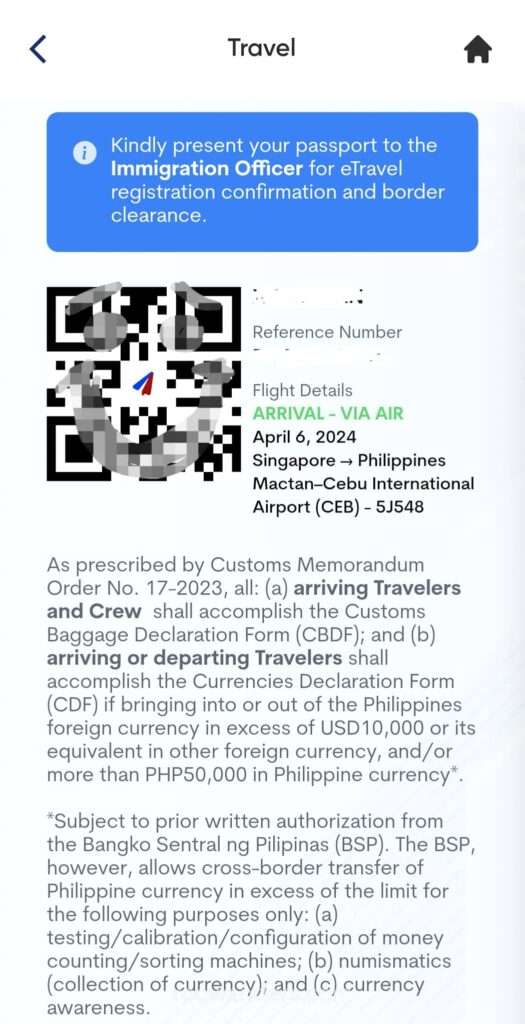
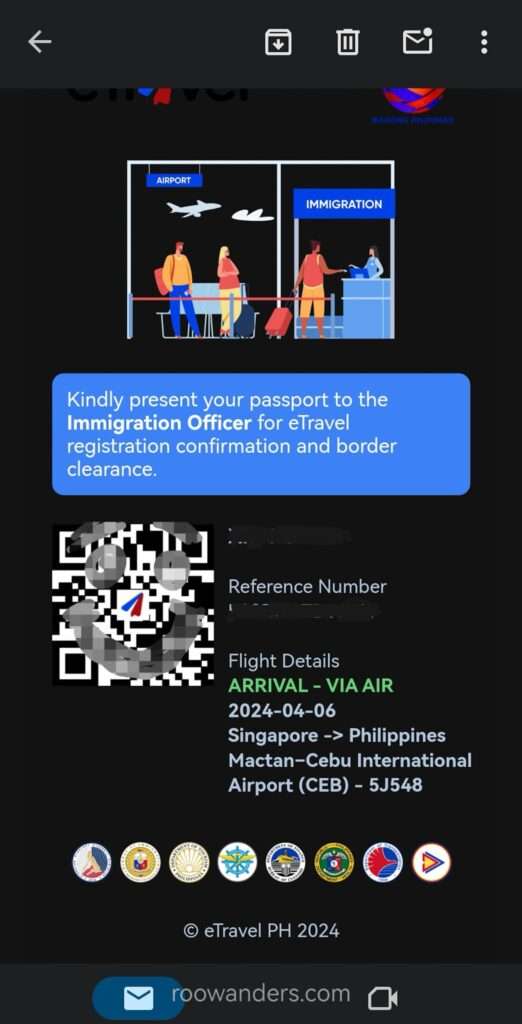
Travelling into Cebu
Flight
If you’re not already in the Philippines, an international flight should be the most efficient way to reach Cebu. Check your best flights available to Cebu here through Skyscanner.
There are several direct flights into Cebu, notably from Korea – I counted at least 5 departure flights to Seoul or Busan while waiting for mine back to Singapore – Taipei, Hong Kong, Tokyo, Shanghai, Bangkok and Singapore. Those hailing outside of Asia will probably have to transit in one of those cities mentioned above.
Plenty of budget flights fly from Singapore. As mentioned above, I went with Cebu Pacific when they had a promotion in Nov 2023. Their marketing team did a great job flashing the promo on my social media. A return flight at SGD 218. A steal, really! Keep a lookout for their next promo or good deals through Skyscanner.
If travelling from other islands of the Philippines to Cebu, there are several affordable domestic flights to Cebu’s domestic airport – Lapu Lapu Airport. The last I checked, a flight from Manila to Cebu via Airasia takes under 90 mins and costs around SGD 55 or P2,300.
Ferry
Alternatively, if you enjoy taking ferry rides, or want to reduce your carbon emissions, there are ferries from the capital, Manila, to Cebu. It takes about 24 hours to complete the journey.
Ferries are fuss-free modes of transport to island-hop in the Philippines. We took the ferry to visit Bohol for this trip. Some travellers hop over to other parts of the Visayas, the Davao region, or the Bicol region via ferry from Cebu (Central Visayas) to extend their Phillippines travels. Don’t know where’s where? Me too…check out the map of the Philippines here (Wikipedia).
Find your transport at 12go to book your tickets in advance and save on the hassle, the inconvenience, and the safety.
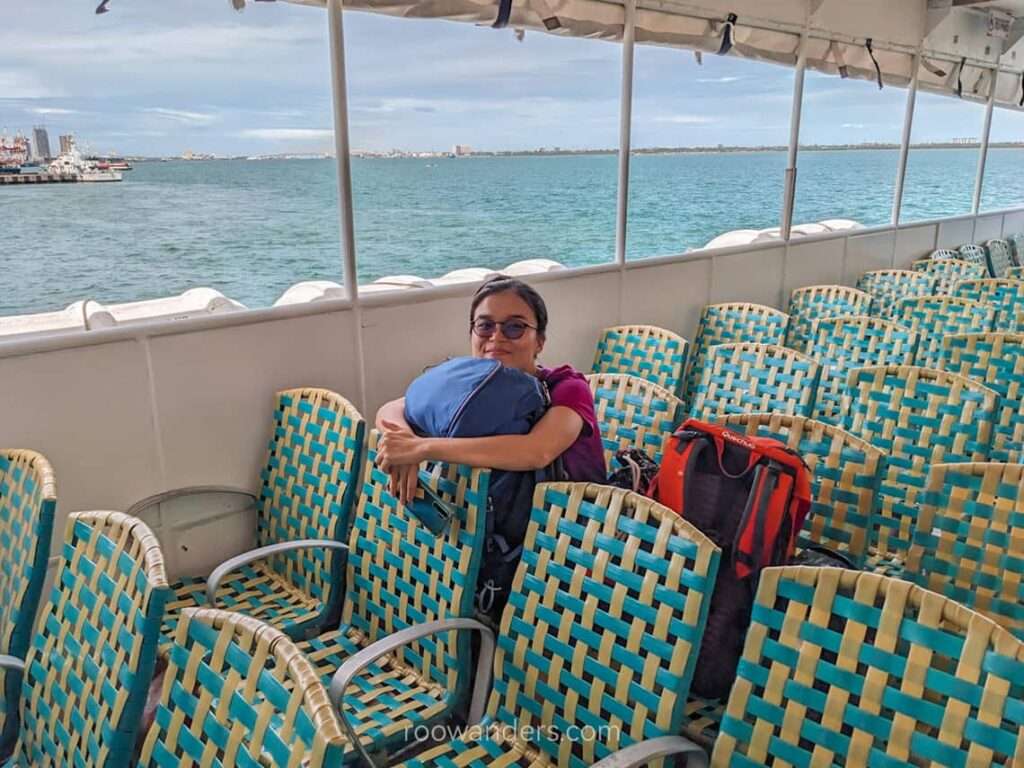
Best Time to Visit Cebu
The weather in Cebu is pretty static, but it can be roughly divided by the very hot and dry months and the still very hot and wet months.
If you’re coming from Singapore, know that the temperature and humidity are somewhat similar, hovering between 26°C – 34°C. Except you get more dust in the air. Cebuanos tend to burn, supposedly, foliage at dusk. More traffic also equates to more dust and exhaust, but generally, the secluded regions of Cebu are fine.
Jan to May are the dry months. I visited in April, and there was no rain for the entire week. It was just hot and dusty. Get proper sun protection or you’ll risk getting sunburnt.
Jun to Dec tends to be wetter with higher rainfall, but everything else remains pretty much the same.
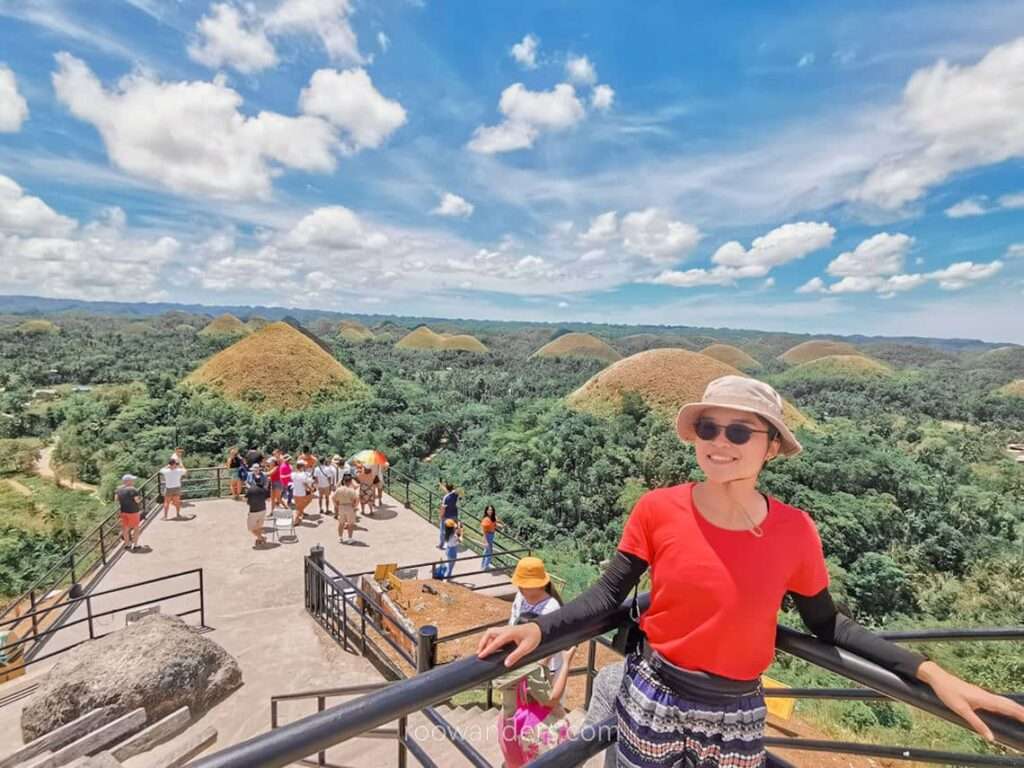
Administrative Matters
Money
Cash is still the king in the Philippines. For my week-long travel in Cebu, we budgeted enough cash to bring over for our dive trips, food and transport. While you can still pay via card in certain establishments, you may incur additional charges.
Why not draw from an ATM?
Well, guess what? The Philippines has one of the most expensive ATM charges to withdraw cash! Their limit is also relatively low – P10,000, on top of the P250 ATM withdrawal fees, which account for 2.5% of the max cash withdrawal!
You may exchange for pesos using USD or SGD. For us, we removed that hassle and went with a money exchanger in Singapore with excellent rates before leaving.
As for my accommodations, I booked through booking dot com, under a joint partnership with YouTrip for extra savings. Those were paid in advance and weren’t factored into the cash to bring. If you haven’t got a YouTrip card yet (applicable only to those residing in SG), sign up with me here!
More about my ✨expenses✨ below!
Data & SIM
Now that I’ve converted to a SIMBA plan, I have free 1GB of data roaming in the Philippines. SIMBA doesn’t have the best coverage or speed in Singapore, but it serves my needs.
Alternatively, you could purchase an unlimited data esim or portable wifi here, or one from the airport. Most established eateries have wifi.
Travelling within Cebu
Walking
We walked whenever possible in the places we travelled in Cebu unless the attractions were beyond a reasonable walking distance. It is easy to get around by foot in the touristy area of Malapascua. Cebu City is easy to explore by foot. It is not possible to reasonably get around Bohol by walking.
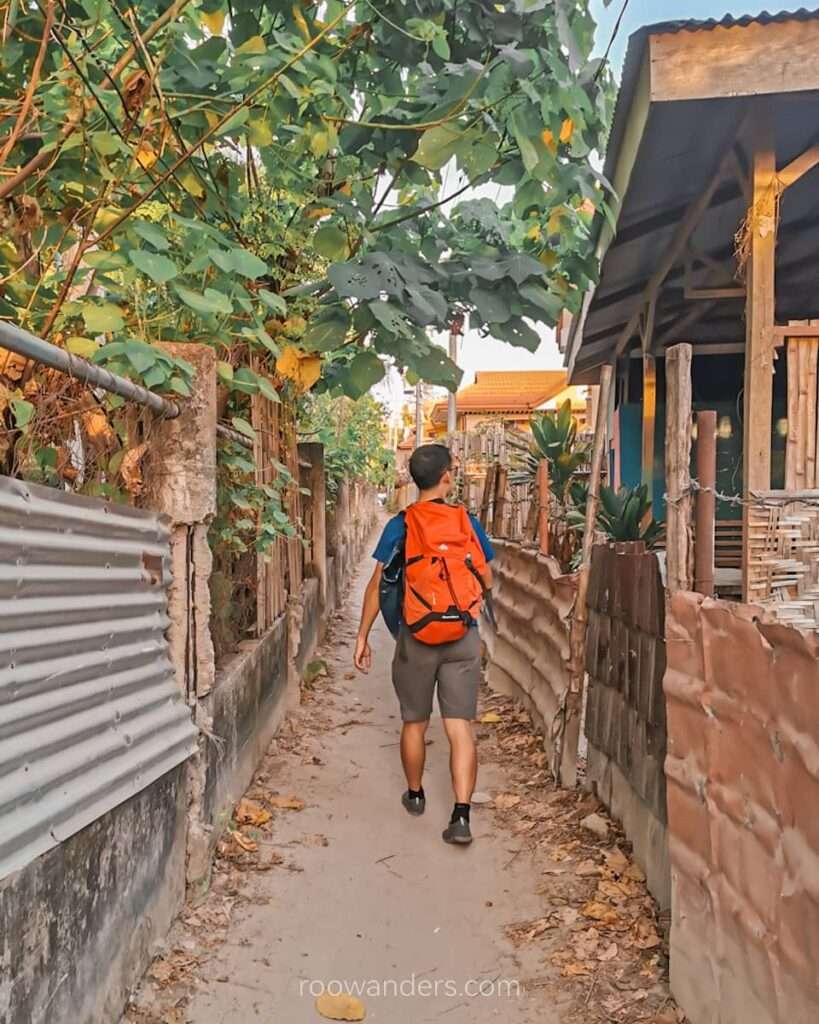
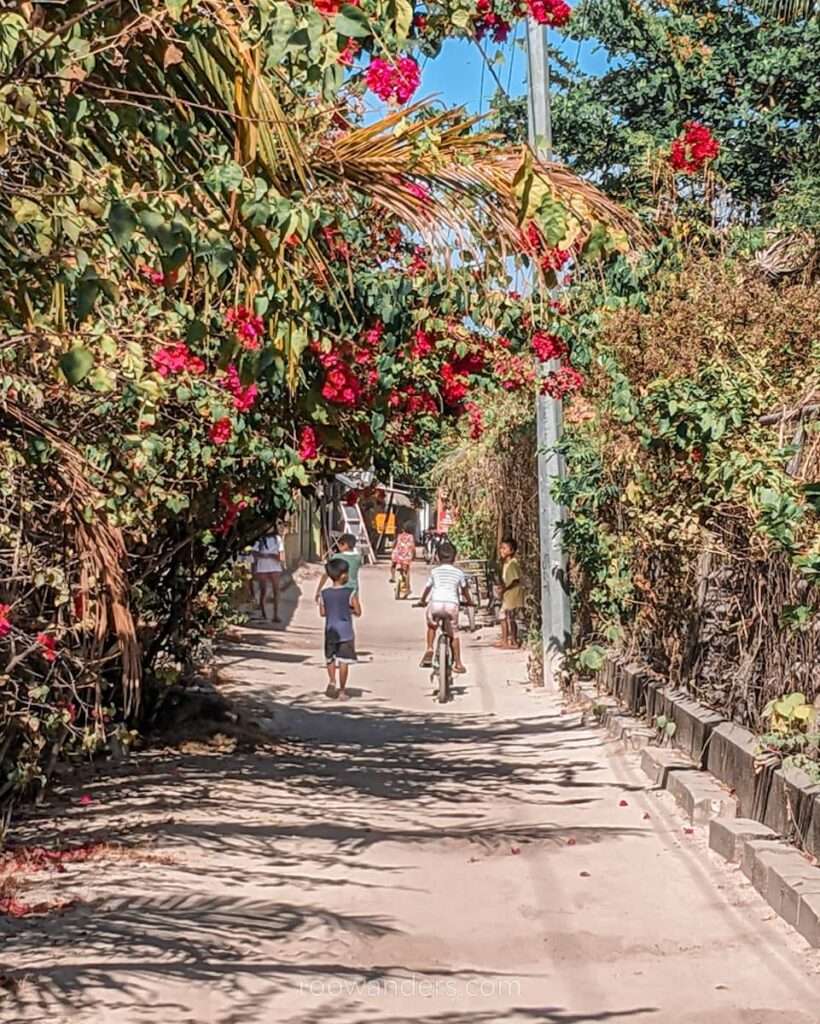
Ride Hailing
Grab has a huge presence in Southeast Asia. I used Grab in Malaysia, Vietnam, Thailand, and now the Philippines. Other ride-hailing apps in Cebu City include Angkas and Joyride. Solo travellers would find the motor rides pocket-friendly.
We mostly used Grab to get us to and fro the airport in Cebu City.
While there are plenty of white taxis roaming the streets of Cebu City, I’d recommend not taking any of those, unless you’re good at negotiating and making sure they won’t rip you off.
Bus/ Van/ Jeepney
For travels within Cebu Island, buses and vans are the way to go. There are two bus terminals in Cebu City to cater for both ends of the island.
Both the North and South Bus Terminals have buses and vans. Vans are usually faster since they do not stop as frequently. But they tend to be pricier as well.
There are only two major highways covering the perimeter of North Cebu, and these two lines are where the buses and vans from the North Bus Terminal go. We took a van here to Maya Port for Malapascua. That cost us P350 per person for a 3-4 hour cramped ride (130 km).
For our journey to Moalboal in South Cebu, we went with a big lime-green bus called Ceres. The ride was more agreeable and cost us P210 per person for a 3-hour ride (90 km).
We saw several jeepneys in Cebu City but didn’t hop onto any of those since our time in Cebu City was limited. Jeepneys are another affordable means to get around Cebu City.
For those looking to save money exiting the airport, there’s the MyBus service. We initially wanted to take this to North Bus Terminal from the airport for P50, but their services only started at 7 AM, when we were already at the airport at 5.30 AM.
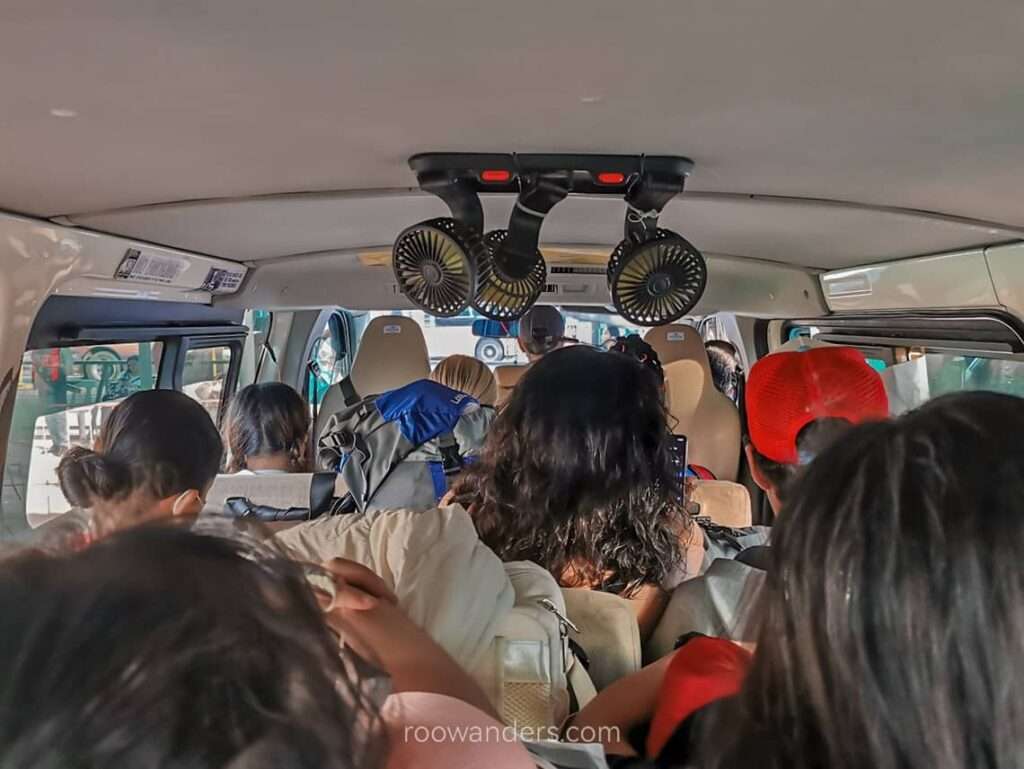
Trishaw/ Trike
While we were at Malapascua and Moalboal, we saw many trikes running up and down the roads.
These are probably the best way for a traveller with huge luggage to travel to their accoms and around when they reach the bus terminal of those places. We didn’t take any since he could ride a motor and we are backpackers.
Motorbike
Since my partner could ride a motor, we rented the cheapest motor available at the positively reviewed rental shops when we hit Bohol and Moalboal. You could get a motor and accompanying helmets for an average price of P500 per day.
Most roads we’d travelled on were a pleasure to ride on – as opposed to those in Laos – with certain sections spotting specially installed lighted dividers that turned the road into an airport runway at night. But we’ve also covered horrendous unpaved rocky and dusty roads to our unusual accommodations.
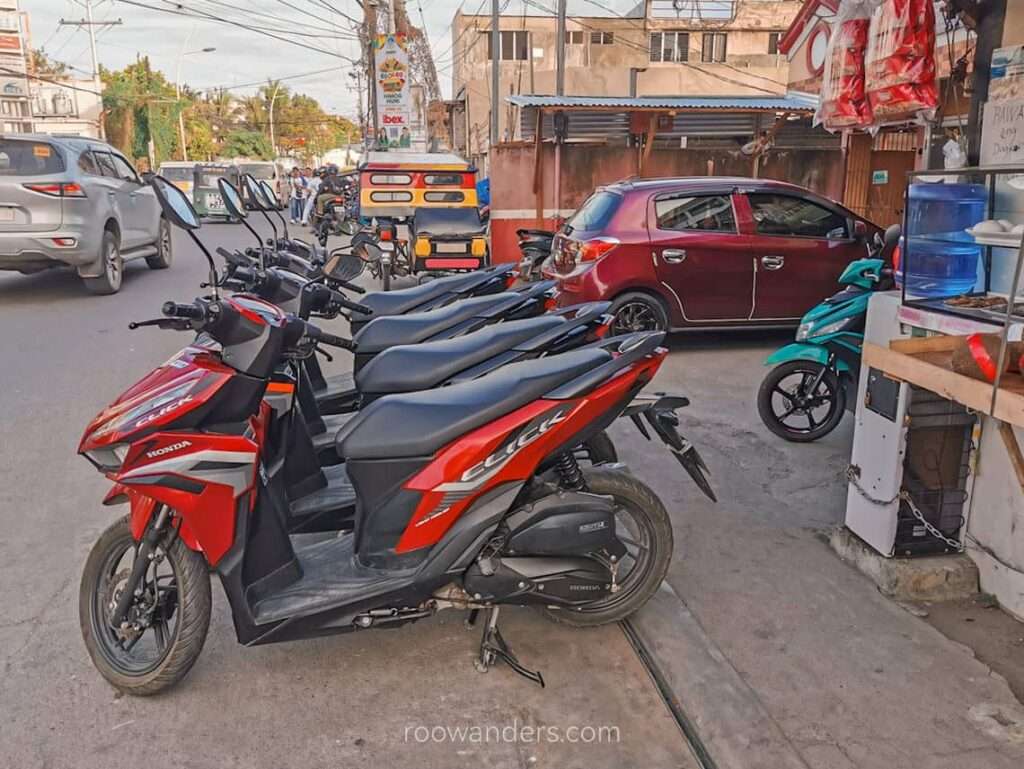
Bicycle
I’ve seen cyclists during my travels, but most were serious bikers in cycling kits. While we were in Bohol, we saw a group of foreign cyclists waiting for their turns to take the shuttle to Chocolate Hills. We also saw enterprising food delivery cyclists of Cebu City.
Apart from that, the presence of tourists using the bicycle as a means to travel around is low.
What to wear
Filipinos are still generally conservative, so it’s still better to err towards that side with shirts and shorts that are not too revealing.
Bikinis are okay, but they should be covered up after you’ve left the beaches.
For my trip to Cebu, I stuck to airy pants and quick dry shirts to protect myself from the dust and sun. And that attire works well for visiting churches like the Basilica del Santo Nino in Cebu City, and the Simala Parish Church.
I also wore sandals, but mostly stuck to grippy-covered shoes when we rode the motor and for Kawasan canyoneering.
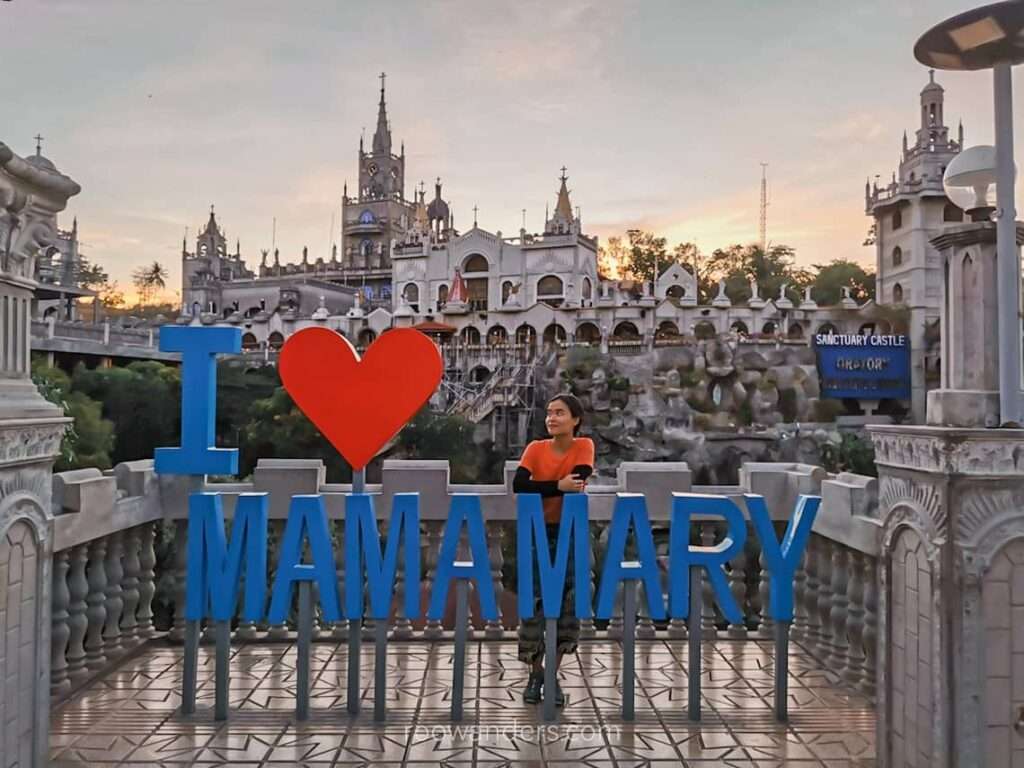
Key Places to Visit
Below are some main attractions any first-time visitors would visit in Cebu, and what to expect.
- Cebu City. Nicknamed The Queen City of the South. Most travellers arrive in Cebu City before embarking on other parts of the island. This is also the place to transit between North and South Cebu.
- Malapascua. A nice chill island famous for its thresher sharks – we saw three! A beautiful place to snorkel or scuba dive in. You could also rent a motor and explore the other remote beaches of Malapascua island.
- Bohol. Home of the famous Chocolate Hills and the world’s second smallest, and oldest surviving primate, the Tarsier.
- Moalboal. A place for adventures. Scuba dive or snorkel with the sardines or explore the coral walls beneath Pescador Island. Canyoneer to the milky blue waters of Kawasan Falls.
- Oslob. Controversial, but this is where you could swim with Whale Sharks lured by food to be there. Hop over to Sumilon Island and enjoy the beaches and underwater world.
- Siquijor. Another beautiful island south of Cebu with gorgeous waterfalls, mysterious caves, excellent dive sites and pristine beaches.
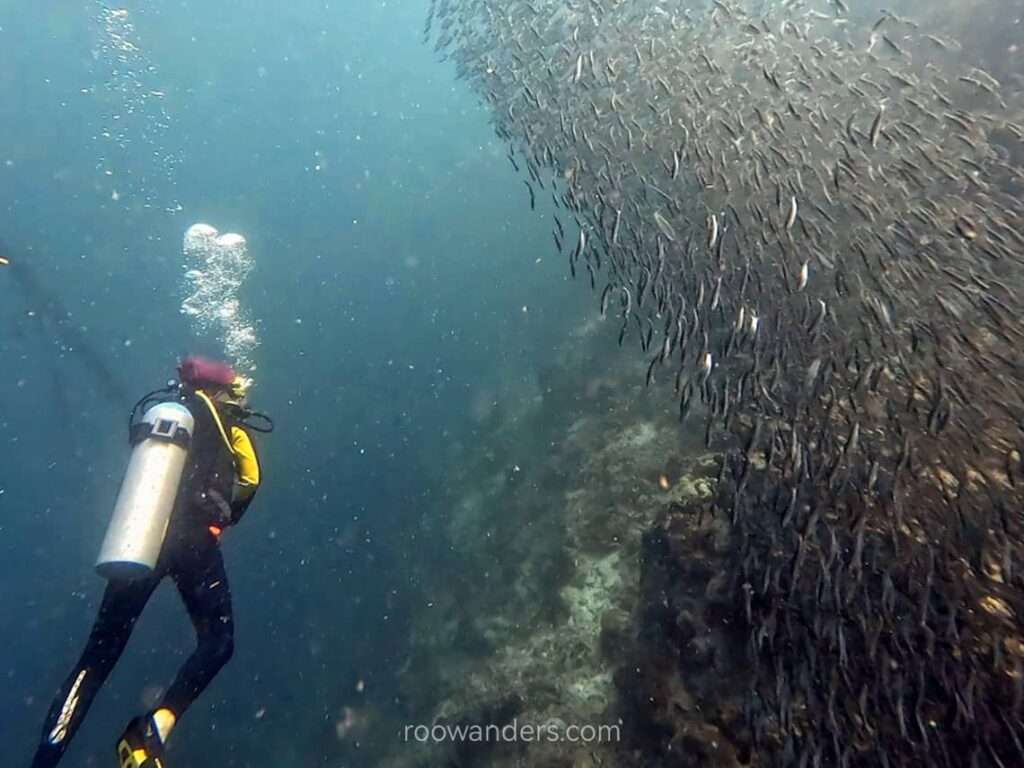
Food to try
I’m partial to Filipino cuisine. It’s meaty, intense, quite processed, and very little vegetables. Not to worry if you’re a vegan though, as those key places I’ve mentioned above have eateries with vegan options.
But for the taste of true Filipino food, it’s meat meat meat, mostly pork.
We’ll explore more about the eateries I’ve visited in Malapascua, Bohol, Moalboal, and Cebu City in their individual posts!✨
Here are some local foods I had in Cebu:
- Lechon. Whole pig roasted over charcoal with juicy meat and crispy skin. Different parts of the Philippines serve different kinds of Lechon. Carcar lechon is, by far, the most delicious lechon I’ve had. It has fork-tender meat and skin as thin and crispy as the Peking Duck!
- Adobo. Chicken or pork cooked in soy sauce and vinegar and other herbs mixture, eaten with rice.
- Sinigang. A sweet and tangy, tamarind-infused soup with fatty pork cuts and some vegetables. An acquired taste for me.
- Longganisa. A type of Spanish sausage like chorizo.
- Sisig. Lots of chopped piggy goodness, and maybe parts, and chicken liver on a sizzling iron cast pan with an egg. Eaten with rice.
- Silog. Eaten as breakfast but can be enjoyed throughout the day. Consists of garlic rice with egg and meat.
- Halo-Halo. Sweet treat consisting of layers of shaved ice, evaporated milk, coloured chewy jellies, beans, yam, mango, jackfruit or lychee pieces, and a purple ube-flavoured ice cream at the top.
- BBQ. You can find BBQ skewers everywhere! We had a meal of BBQ meats consisting of chicken breast, wings, liver, intestines, and fatty pork pieces for one of our meals in Moalboal.
- Puso. Also known as ‘hanging rice’. It’s like ketupat – rice wrapped in coconut leaves.
- Ngohiong. We were tickled when we saw this in Cebu City since it is an adaptation of the original Hokkien dish, Ngo Hiang. The Ngohiong we had was wrapped in spring roll pastry skin and deep fried, different from what I was used to – bean curd skin.
- Sotanghon. The Filipino version of glass noodle soup. Has shredded meat pieces and vegetables.
- Tinolang Isda. Also known as fish in ginger broth. Tuna chunks cooked in ginger, lemongrass and other vegetable soup. Order to increase vegetable uptake.
- Nilaw-Uy. Clear soup chock full of vegetables. Of Visayan origin. Usually contains moringa leaves, eggplant, squash, spinach leaves, string beans and okra. We’d usually order this if there’s no tinolang isda or we don’t feel particularly carnivorous for that meal.
- Lomi. Thick yellow egg noodles, meat, and vegetables soaked in thick gravy soup made from cornstarch and egg drops.
- Inasal Panga. We had chicken and tuna jaw inasal panga. Grilled soy-sauce marinated cuts of meat eaten with rice, paired with a squirt of freshly squeezed calamansi.
- Buko Juice. Also known as young green coconut juice.
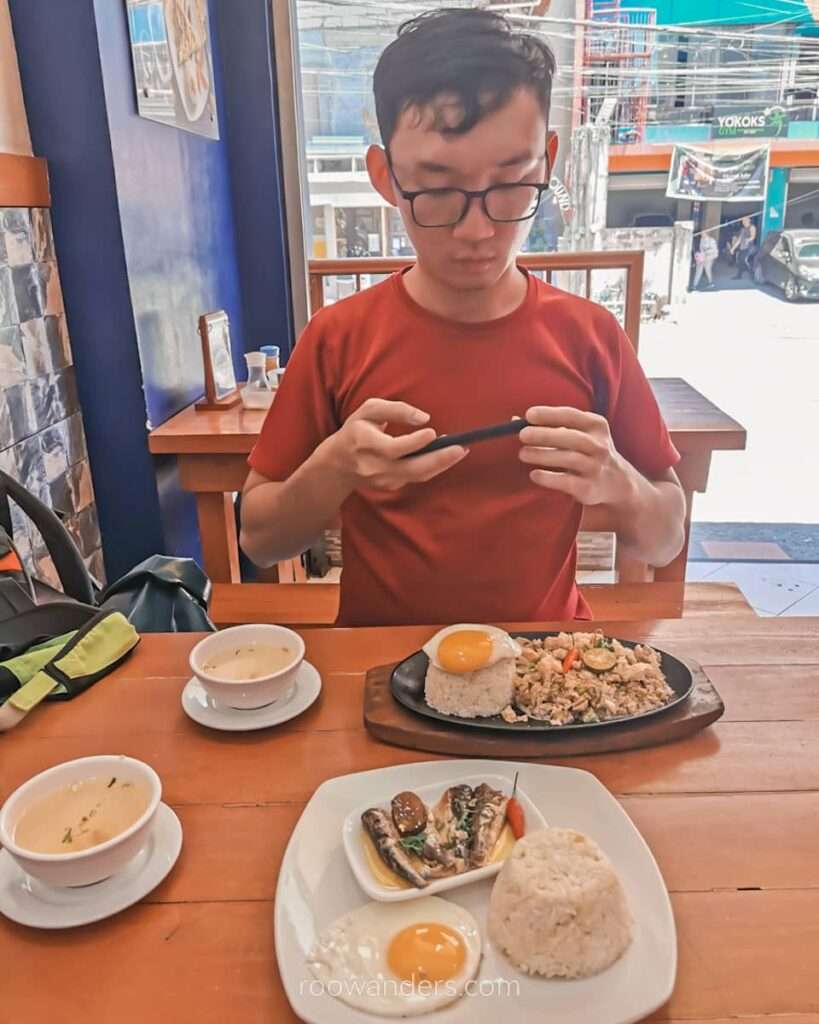
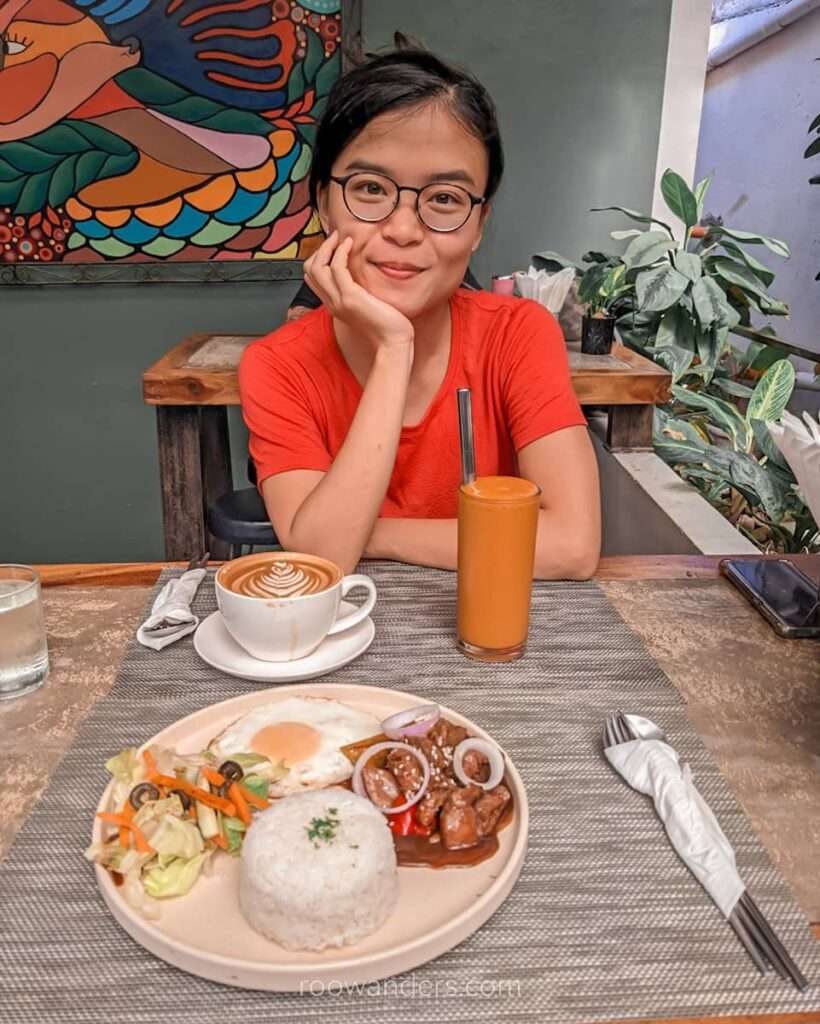
What I did not try:
- Siomai. I’ve seen Cebu-style siomai – steamed pork dumplings – several times in eateries. We didn’t try that though, since they are somewhat like the Chinese shumai (燒賣).
- Kare-Kare. Various cuts of meat stewed in rich and thick peanut sauce. Filipino curry.
- Kaldereta. A kind of hearty tomato-based beef stew. Peanut butter might be added to it for some versions.
Drinking water
Tap water differs in the places I’ve visited, but they’re mostly salty and undrinkable. Or maybe they are but we never tried. We still brushed our teeth using tap water and were spared from any tummy upsets.
Cebuanos seem to take their drinking water from those 5-gallon water dispenser bottles. We saw several refilling stations, and trucks and trikes carrying those blue bottles throughout our travels. We get our drinking water from those bottles too.
For all of the accommodations we’ve stayed in, water is free. Almost all eateries provide free drinking water as well.
My One Week Itinerary
Day 1: Land in Cebu, and travel to Malapascua. Landed early in the morning and headed over to North Bus Terminal. We then travelled in a van for almost 4 hours to Maya New Roro Port. From Maya Port, we took an hour-long ferry to Malapascua. Explored the southern, populated area of Malapascua on foot.
Day 2: Thresher Sharks Dives in Malapascua. Woke up at 5.30 AM for an early morning dive for thresher sharks. We did 3 dives in total before lunch. Spent the rest of the day relaxing since it was hot in the afternoon.
Day 3: Travel from Malapascua to Bohol. Took the first ferry at 7AM to Maya New Roro Port. Retraced back to Cebu City via a van near the port. We headed to the ferry pier and boarded an afternoon two-hour-long ferry to Tagbilaran, Bohol. Rented a motor to our accommodation that evening.
Day 4: Bohol Attractions. Visited the iconic attractions in Bohol, such as the Chocolate Hills and Tarsier Sanctuary.
Day 5: Travel from Bohol to Moalboal. Took one of the morning ferries back to Cebu City. Headed to the South Bus Terminal and boarded the afternoon bus – the journey took around 3 hours – to Moalboal. Rented another motor to our accommodation.
Day 6: Sardine Dives in Moalboal. Scuba dived three times for the sardines, and also one around Pescador Island.
Day 7: Kawasan Canyoneering. Spent half a day canyoneering the Kawasan Falls. Then the other half of the day on a long joy ride to Simala Parish Church.
Day 8: Travel to Cebu City. Took the late morning bus from Moalboal back to Cebu City. Visited some nearby attractions around Colon Street.
Day 9: Fly out of Cebu. Spectated a mass at the Basilica del Santo Niño. Indulged in some lechon, and a long massage. Relax over coffee before heading back to Singapore.
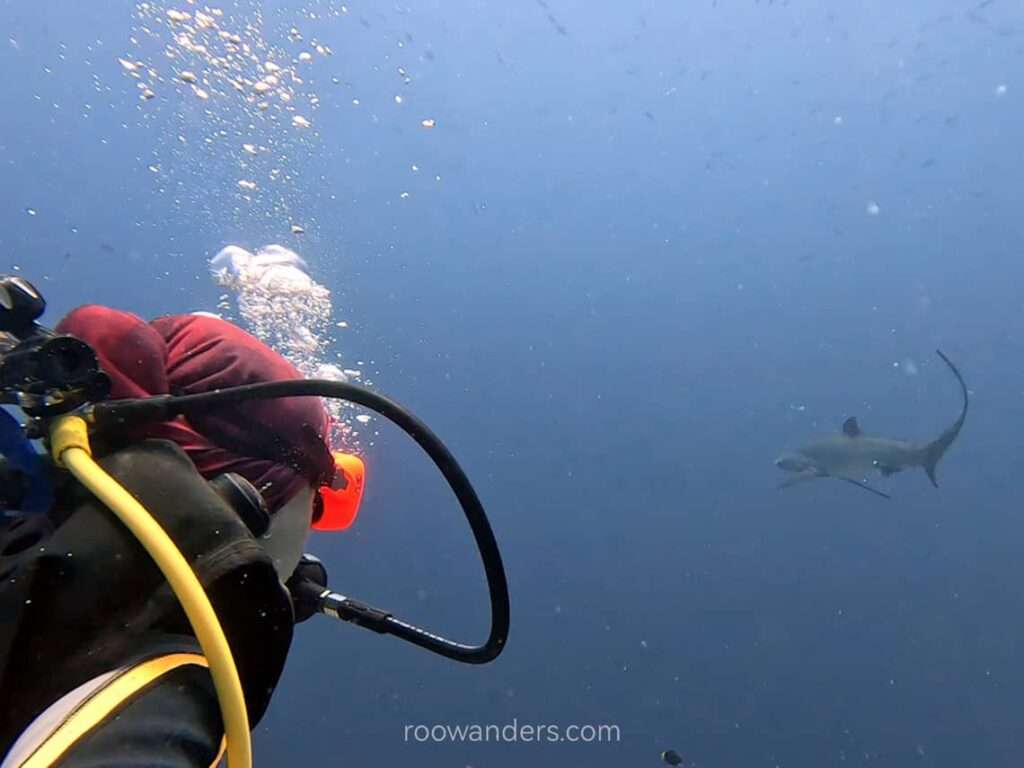
Expenses
Both my partner and I are geeky when it comes to our trip expenses. For a weekend-to-weekend trip like ours, we spent less than S$1000 each, including our return airfare.
As expected, after removing airfare, which amounts to less than S$300, the bulk of our expenses falls into activities, mostly scuba diving. That’s understandable since scuba diving is one expensive activity, averaging close to S$50 per dive, including gear rental in Cebu.
For our accommodations, we chose to stay somewhere special. All our lodgings in Malapascua, Bohol, and Moalboal are in bamboo huts. In total, this segment contributes less than S$200 for both of us or around S$12 or P500 for one each night.
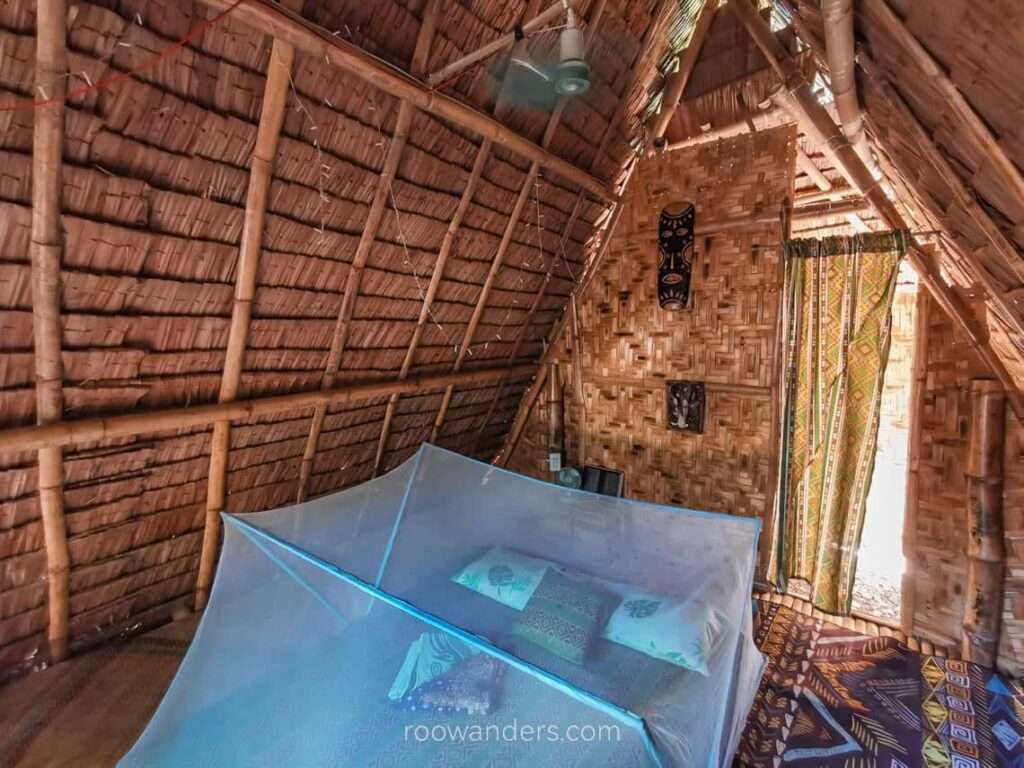
Food and transport are fairly divided, with food taking in a bit more, and our transport fees cut down by motorbike rentals.
Motor rentals averaged around P500 per day. Petrol was around P85/ L or S$2/ L for us. We also took Grab to travel within Cebu City for comfort and convenience. That adds a bit more when compared to others who rely on jeepneys or mybus.
A satisfying meal in Cebu for us ranges from P300 to P1000 for two. If you drink, it’ll cost slightly more.
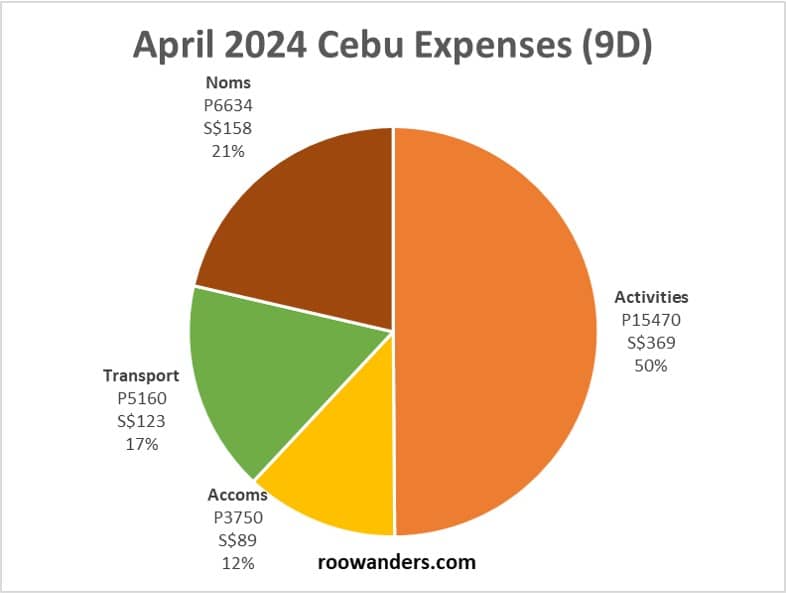
Conclusion/ Rambles
I thoroughly enjoyed myself in Cebu. Never mind the long travelling time, the dust, the noise, and the heat.
For the long travelling time, I reasoned it as getting to somewhere remote, which equates to getting closer to nature and its resulting beauty. That’s how the trip to Malapascua felt like! The waters in Malapascua were so undisturbed and clear.
As for the dust, noise and heat, well, it’s all part of backpacking in Cebu!
Food-wise, it’s chockful of meat, and vegetables are rare in local eateries unless specially ordered. Touristy locations now have Westernised eateries selling rice bowls, smoothies, and vegan options. These are obviously pricier.
The heat, dust and heaty food – grilled food, garlic rice, meats – will eventually lead to ulcers and pimples no matter the amount of hydration you’re taking in. An abundance of delicious mango – one of the main exports of the Philippines – does not help either.
Now that I’ve finally visited the Queen City of the South, I’m grateful to say I’ve seen quite a number of the Philippines’ most beautiful sights – the ruins of Manila, UNESCO padi fields of Ifugao, like Batad, the hanging coffins of Sagada, and now, the chocolate hills, tarsiers, and underwater world of the Cebu region!
Palawan next time, maybe? For the UNESCO-worthy Tubbataha Reefs.
